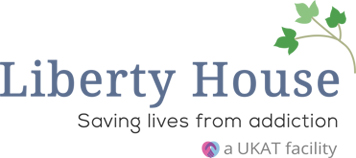Once affected by a heroin addiction, it can be very difficult to break the cycle of drug abuse. The intense cravings for the drug make it almost impossible to quit, but even those with the most severe addictions can overcome it if they get the right help and treatment.
Hester Brodie struggled with a crack, alcohol and heroin addiction for six years before she got clean in 2001. She has managed to stay clean since then, but she admits that her substance abuse days still affect her. She now wants to tell her story of addiction and is using her hobby of photography to do so.
After turning her life around and falling pregnant with her first child, she decided that she would share her journey to recovery with others by placing photographs on the walls of the corridors in her housing association flat.
Hester’s Story
Hester has chosen various images of social housing tenants and fellow students as well as a number of people who allowed her to crash at their place while she struggled with addiction. She said, “The photos are a documentation of all the people I’ve met along the way of this struggle to sit still and be with my own feelings. For a long time, I was trying to run away from myself.”
Hester began abusing heroin at just eighteen years old. She had been sexually abused by a neighbour between the ages of eleven and fourteen and admits that she took the drug because she wanted oblivion. She said, “I was never scared of heroin. I just went for it; I absolutely went for it.”
Despite trying to get clean a number of times, she always relapsed, and even when she was staying in a new age traveller site in Cornwall where drugs were not permitted, she managed to find another person who had the drug.
After moving back to Bristol where she had located to study art, Hester began a relationship with her current partner Mark, who was also an addict. She said, “We were in a right old state and his flat turned into a crack den. I left him because I thought I could get clean that way. I didn’t.”
Rock Bottom
Hester reached rock bottom at the age of twenty-three and admitted, “Heroin wasn’t working anymore. I had no veins left. There was nowhere else to go; nothing was working – including the drugs.”
After reaching out for help from a social worker, Hester was referred to rehab. This was the first time she had attempted rehab and confesses that she never considered it before as she did not think she was ‘worth it’.
She also acknowledges that she never believed her problems were that bad, adding, “Bizarrely I never thought I was bad enough. I always thought famous or rich people went to rehab. It was a case of really low self-esteem. I think addicts, in general, have problems taking support.”
Recovery
Hester moved to London after completing her rehabilitation programme and signed up for a photography course in a bid to put her demons behind her. However, her student accommodation was situated very close to where she had once abused heroin. She said, “I felt wherever I was going, I couldn’t escape it.”
She started to look for Mark again but said that when she couldn’t find him, she thought he was dead, so she gave up. It was not until 2010 that she made contact with him once more through social media. They found love again and are now expecting their first child. She says she now has inner peace and is determined to stay clean. Nevertheless, she admits that the memories of her heroin addiction will probably never leave her. She said, “It is quite hard because of the people in my life, it is very difficult to move on. I feel like it is a constant thing. If I didn’t seek help, there would be a very, very high chance that I would relapse. It is always there.”
Exhibition
A number of those who feature in Hester’s exhibition are those who she knew while she was addicted to heroin but who she met once more after getting clean. One of the photographs was of an old friend, Ruth, who sadly died not long after her photo was taken. Hester said, “I had forgotten a lot of my using – when I met Ruth again, it was good for me to remember. It brought back a lot of painful memories.”
Her exhibition also features photos of some of the people she met during her recovery journey, which tell happier stories. She says that she now understands even those who are not suffering from illnesses such as heroin addiction have problems, adding, “Everyone has their histories or problems, which is something that took me years to realise as I think addicts have a tendency to think they are the only ones with problems. Of course, nowadays I know that is far from the truth.”
Hester says that photography has helped her to turn her life around and keep her on the right track.
Source: ‘I wanted oblivion’ – a recovering heroin addict tells her story of addiction (iNews)



